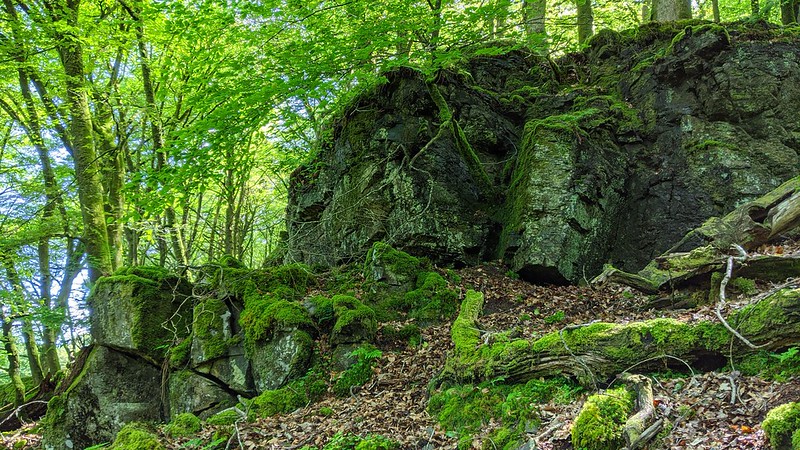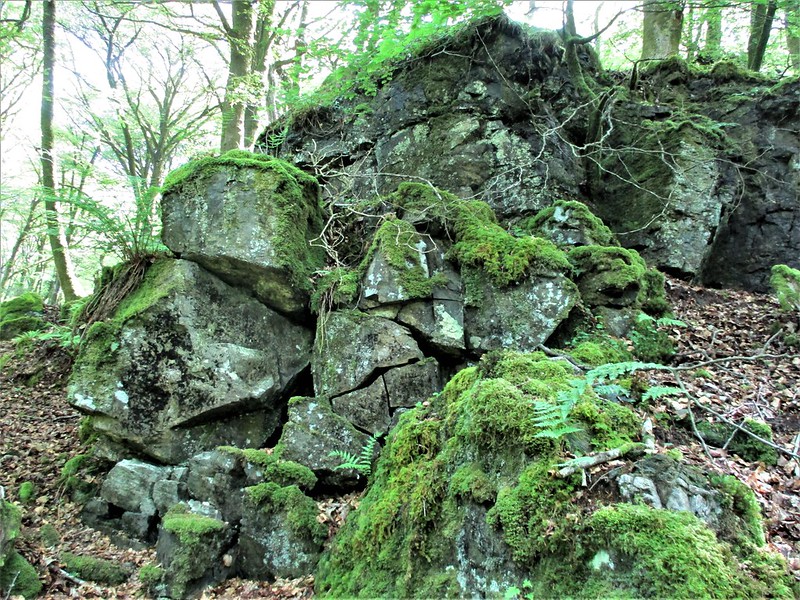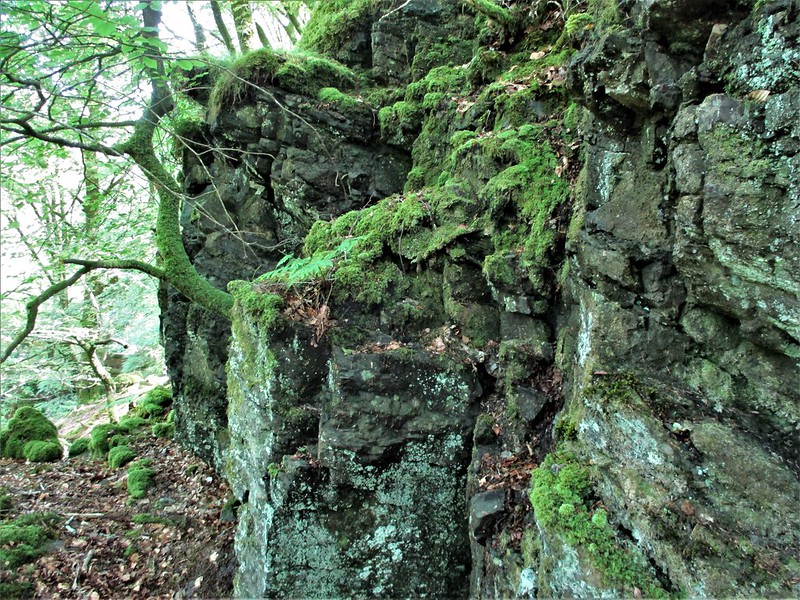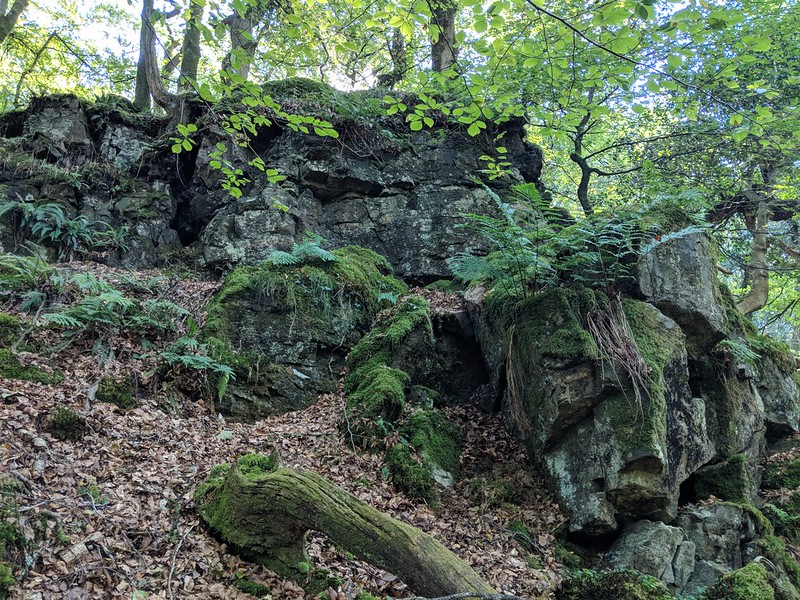TORS OF DARTMOOR
a database of both lesser- & well-known rocks and outcrops
Combe Tor (Cornwood)
 The Dendles Wood Nature Reserve is one of South Dartmoor's hidden gems and found within its bounds are extensive clitters that cover much of the lush, green, mossy woodland carpet. In that part of the reserve on the east side known locally as Combe Wood, a sub-section of Dendles Wood, there is an interesting rockpile that is perched about halfway up the valley side between the east bank of the River Yealm and the top of the wood.  It presents as a craggy small tor that is best seen from the underside. From above it is a prominent mossy ledge, but round its face to discover a small passage between the main pile and smaller side outcrops. The rock type here is metamorphic within what is known as the 'Dartmoor Aureole', an area of rock on the edge of Dartmoor. About 280 million years ago, this rock was originally sedimentary in composition, but the extreme temperature of the intruding granite 'baked' it so that it became metamorphic (Collingwood 2017). Therefore, the rocks appear to be much more angular and loose with a dark hue that always seem to be dripping with water.  During their exploration of the area in August 2019 Dartmoor Guide Paul Rendell alerted Max Piper to the presence of Combe Tor as he had known the outcrops here by that name since at least the 1990s. The tor itself is quite impressive at close-quarters and standing beside it reveals a special scene where the sound of the not-too-distant River Yealm can be heard splashing over boulders. The concentration of clitter all around but particularly below and to the north of the small tor would suggest that a once much larger outcrop stood in this vicinity. Previously overlooked in the literature Combe Tor is described along with other piles in Dendles Wood in a ground-breaking edition of Dartmoor News (no 117) from the early part of 2021.  It was once thought that Dendles Wood could only be accessed through the adjacent Dendles Waste to the north-west or the open moorland below Stall Down to the north-east, however, there is a permissive path from the road bend at Hele Cross (SX 61315 61036) that enables much simpler access from the south; passing Higher (or North) Hele, it takes you to a gate and an information board that gives you facts about the biodiversity as well as a plan of the reserve denoting ownership boundaries. A good network of footpaths and tracks thread through Dendles Wood utilising sturdy footbridges, and when visiting Combe Tor it is advised that you first reach the footbridge by the weir at SX 61711 62022 and at another information board turn right where the buttress of the tor can be seen above to the left. Please note that Combe Tor lies within land owned by Natural England, and they politely ask that visitors contact their offices at Yarner Wood in advance to seek formal permission to access this reserve.
| ||||||||||||||||||||||||||||||